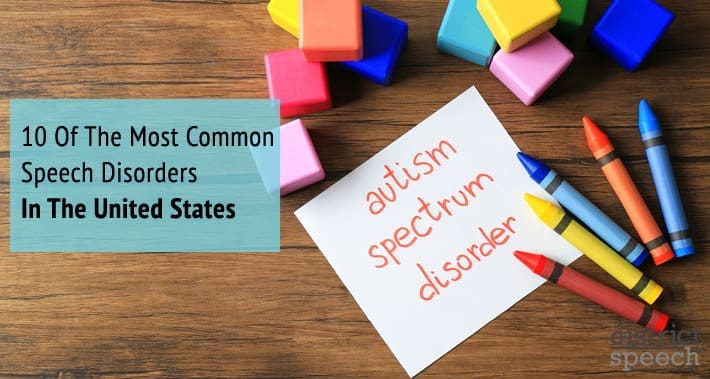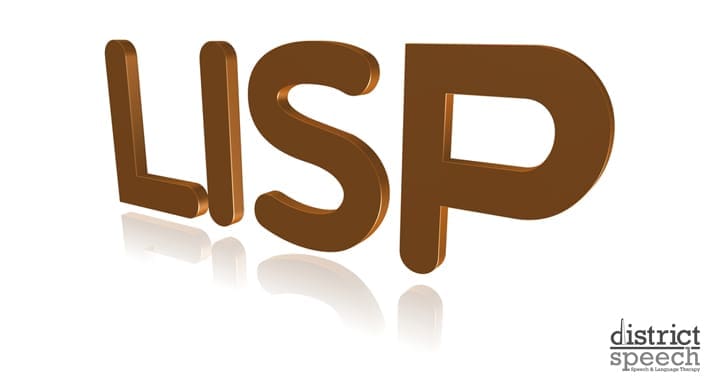
According to the National Institute on Deafness and Other Communication Disorders (NIDCD), approximately 1 in 12 children from the ages of 3 through 17 have had a disorder related to language or speech in the past year.
In addition, 7.6% of adults have experienced an issue with their voice in the same time period.
That’s to say, disorders related to speech and language are not rare.
Chances are you know someone who has struggled with these issues.
If you or your child is dealing with a speech disorder, it’s important to know you’re not alone.
It’s also good to remember that speech therapy for stuttering and other disorders is available.
Keep reading as we take a look at some of the most common speech disorders in the United States.
What Is A Speech Disorder?
When you have difficulty forming the sounds of speech required to communicate in your native language, this is a speech disorder.
People with a speech disorder usually (but not always) know what they want to say.
However, they can have trouble putting those thoughts into words and verbalizing them.
This can take many different forms.
For some people, it may look like struggling to make the muscle movements required for clear speech.
Others may have difficulty controlling their breath as they speak.
Some people may have the capability to speak, while others may not have the capacity to speak verbally and may require alternate options.
Let’s take a look at some of the most common speech disorders.
1. Stuttering
If you ask most people to think of an example of a speech disorder, stuttering is probably one of the first ones many will think of.
RELATED: What Is Stuttering And How Can A Speech Therapist Help?
It’s characterized by the repetition of words, sounds, or syllables, speech interruptions known as blocks, and prolonging sounds.
People who stutter know what they want to say, but have difficulty producing speech.
One of the most common types of speech disorders, the National Institute on Deafness and Other Communication Disorders estimates that approximately 3 million Americans stutter.
This includes some pretty famous stutterers, including Marilyn Monroe and and Kendrick Lamar.
Stuttering often becomes obvious when a child is first learning to speak.
However, roughly 75 percent of children who develop a stutter will outgrow it eventually.
2. Cluttering
Just like stuttering, cluttering is also a fluency disorder.
Someone who experiences cluttering usually has speech which is rapid or jerky and contains large amounts of interruptions such as “like”, “hmm”, and “um”.
Additionally, it often has exclusion or collapsing of syllables and an abnormal rhythm of speech.
Signs of cluttering generally first show up in childhood and can be improved with early intervention from a speech language pathologist.
3. Issues Related To Autism Spectrum Disorder
Autism spectrum disorder itself is not a speech disorder.
However, many autistic children struggle with social communication.
Additionally, some autistic children are nonverbal, meaning they cannot speak or their speech is extremely limited.
Nonverbal children rely on augmentative and alternative communication (AAC) to communicate.
The Centers for Disease control estimate approximately one in 36 children is autistic.
Struggling with speech and communication is often one of the first signs of autism.
One of the most common speech disorders associated with the autism spectrum is childhood apraxia of speech.
Apraxia occurs when your child has difficulty with the muscle coordination required to create sounds and syllables.
Other notable speech disorders which are often linked to autism spectrum disorder include repetition and unusual inflection.
RELATED: Frequently Asked Questions About Autism Spectrum Disorder

4. Lisp
Like stuttering, lisping is very common and easily recognized.
The most common type of lisp the “interdental” lisp, which is when the speaker creates a “th” sound when attempting to make an “s” sound.
A study in the Journal of Communication Disorders found approximately 23% of young adults studied spoke with a lisp, and found no significant differences between male and female participants.
5. Aphasia
Aphasia is a disorder which is caused when there is damage to your brain’s language ability.
It commonly appears in individuals who have suffered from a stroke.
However, it can also occur after traumatic brain injury, degenerative brain disease, or a brain tumor.
This disorder doesn’t just affect speech, but also the ability to understand both verbal and written language.
According to the National Aphasia Association there are approximately two million people in the United States with aphasia.
6. Dysarthria
Dysarthria presents as slowed, slurred speech, abnormal rhythm when speaking, limited jaw and tongue movement, labored speech, and difficulty articulating.
It’s a result of damage to the muscles or nerves used for speaking, including the lips, tongue, vocal chords, and diaphragm.
Individuals of all ages can be affected by dysarthria.
In younger individuals, it is often linked to conditions such as cerebral palsy and muscular dystrophy.
In adults, it often appears following a stroke or brain tumor.
7. Mutism
Selective mutism is a condition where someone is capable of speech, but only speaks in certain situations.
An example is a child who only speaks at home, but not at school.
It’s common in children with social anxiety or who are extremely shy.
But it’s worth noting that it’s not just shyness – there’s more at play.
The American Speech Language Hearing Association estimates selective mutism occurs in approximately 0.5% of kids.
8. Apraxia Of Speech
Apraxia of speech (AOS) is a condition where there is a disconnect in the neural pathway between the brain and muscles responsible for speech.
Although people with apraxia of speech know what they want to say, the brain can’t send the messages to the mouth needed in order for them to actually speak.
There is very little data available on AOS, however it’s estimated by Nationwide Children’s Hospital to affect around 1% of children.
9. Spasmodic Dysphonia
Spasmodic dysphonia is distinguished by vocal chord spasms when an individual tries to speak.
The result is a shaky, groaning, or jittery quality to the voice.
It generally appears in adults between the ages of 30 and 50 and is linked to changes related to ageing including muscle tone disorders.
10. Issues Related To Cleft Palate
Cleft lip and cleft palate are conditions that affect the lip and soft palate towards the back of your throat.
With cleft palate, your mouth is not closed off from your nose when speaking, and this can lead to air escaping from your nose.
The result is often speech which sounds nasal.
RELATED: Frequently Asked Questions About Cleft Lip And Cleft Palate
Book Your Appointment With District Speech Today
Is your child showing signs of a speech disorder?
Do you want to be proactive in having a speech therapy evaluation done so you can determine what interventions may be needed in order to support them in their speech development?
We’re District Speech, speech therapists in DC, and we can help.
Contact us today for more information or to set up an appointment.
Book your appointment with District Speech today.
1300 I St NW, #400E,
Washington, DC 20005
- https://g.page/districtspeech
District Speech and Language Therapy specializes in speech therapy, physical therapy, and occupational therapy solutions, for both children and adults, in the Washington D.C and the Arlington Virginia areas.